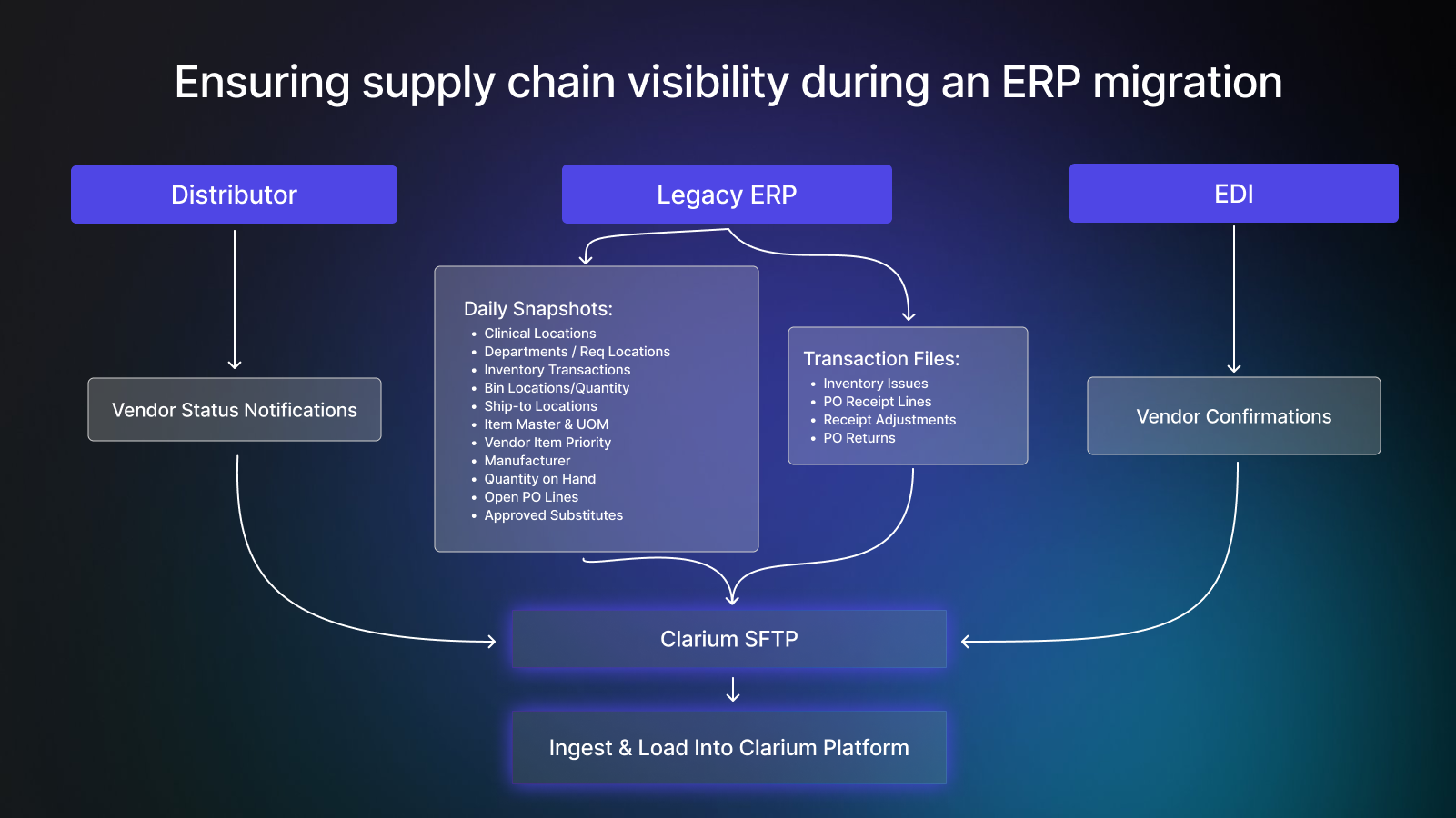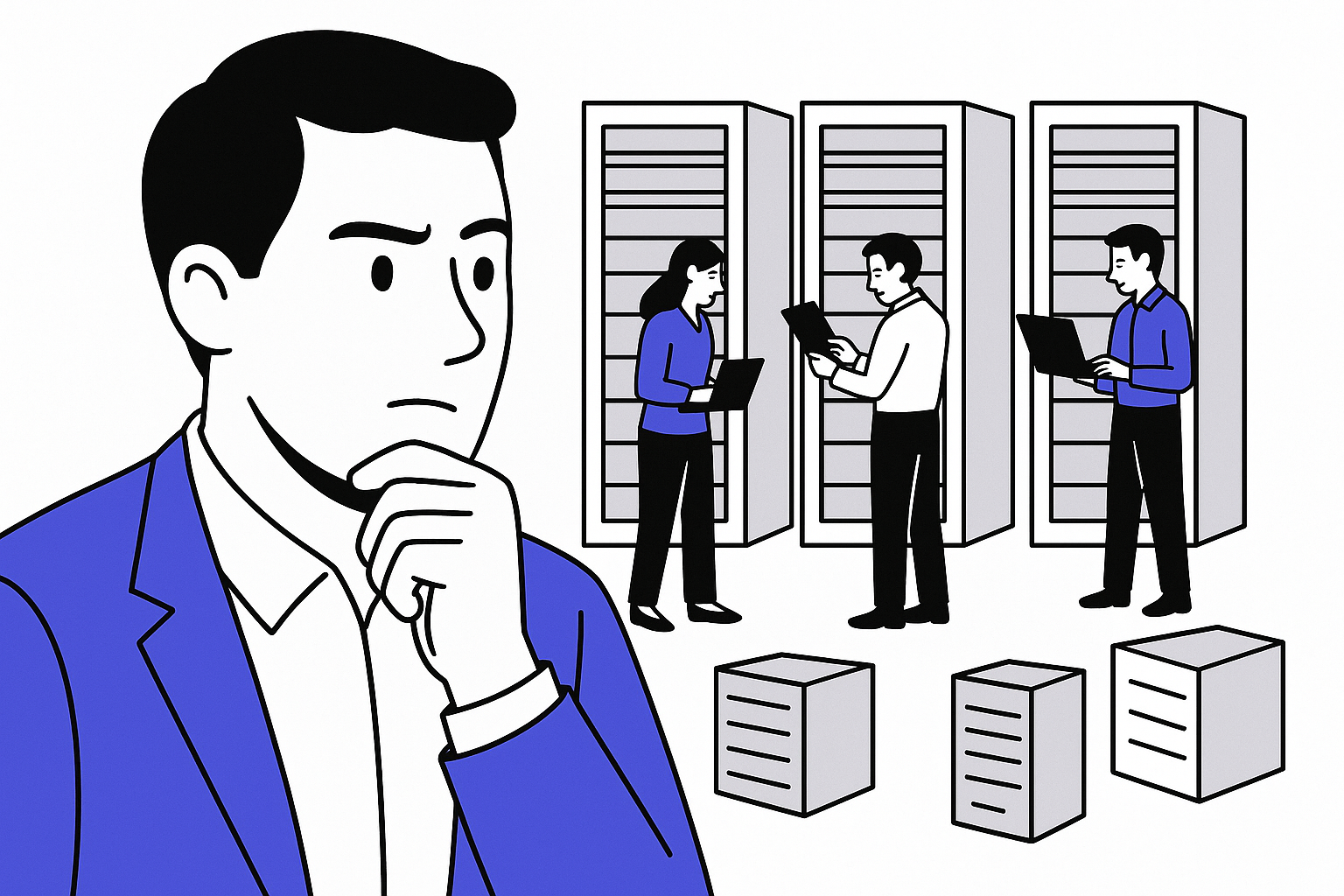Most health systems approach ERP transitions the same way: pause all technology initiatives, accept months of limited visibility, and rebuild analytics capabilities after go-live. This approach treats data continuity and ERP implementation as competing priorities. The result? A costly data blackout that leaves supply chain teams flying blind at precisely the wrong time.
What forward-thinking health systems are discovering is they don't have to choose. By implementing an independent intelligence platform, they create a stable data foundation that persists through the transition. This not only preserves years of institutional knowledge but also bridges the gap between your old and new systems, ensuring operational continuity when it matters most.
Why this matters
ERP migrations are high-stakes moments. They demand focus, resources, and IT bandwidth. But they also pose three major risks for supply chain leaders:
- Loss of Historical Context: Years of item utilization, vendor performance, and contract data become siloed or inaccessible.
- Interrupted Analytics: Key metrics like fill rates and lead times become useless for months.
- Overburdened IT: Data teams are consumed by the core ERP rollout, leaving no capacity for analytics continuity.
A better approach: How one health system maintained full visibility through a complex migration
Instead of accepting the conventional trade-offs, one large academic health system used Clarium to maintain end-to-end visibility throughout its ERP migration, empowering its new system with a complete historical picture and enhanced analytics from day one without overburdening its IT team.
This health system's supply chain and IT teams was keenly aware of the challenges inherent in large-scale ERP transition. They were migrating from two legacy systems to a new ERP and wanted to ensure their team had complete visibility throughout.
- Comprehensive data extraction from legacy systems: Clarium extracted and unified 24 months of historical data from both legacy systems, ensuring continuity of critical metrics and insights into key supply chain KPIs like utilization, fill rates, lead times, supplier performance, and contract compliance.
- Data mapping to Clarium Universal Item Master: Data mapping to Clarium Universal Item Master:The Clarium platform automatically mapped both the old and new ERP item masters to our 7 million+ Universal Item Master, creating a single, unified view across the entire organization, regardless of what system it originated from.
- Creation of a new, seamless data environment: The end result was a seamless data environment where a user could analyze the fill rate for a specific SKU at the facility-level over 24 months as if the transition never occurred.
Clarium’s implementation plans are designed to minimize the burden on your teams, which is critical at a time when resources are constrained and getting time from IT is a pipe dream. The entire process, from kickoff to a live, unified data environment, can be completed in just 12 weeks, often running in parallel with other ERP pre-launch activities.

The bottom line
ERP migrations don’t have to be a roadblock to supply chain intelligence. By establishing an independent data foundation before go-live, health systems preserve their institutional knowledge, maintain operational continuity, and accelerate ERP ROI.
If you’re planning an ERP migration, the question isn’t whether to engage a supply chain intelligence platform. It’s whether you can afford not to.

